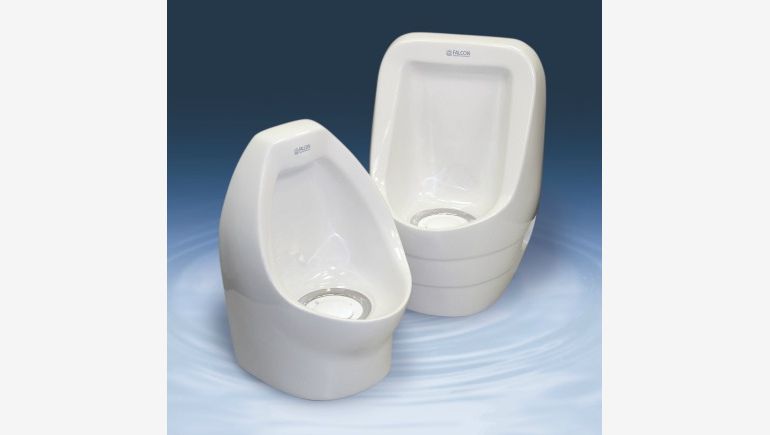Environmental awareness and sustainable building technologies are quickly becoming today's hot topics of interest. Most modern buildings are now equipped with energy and water saving solutions, not only due to obvious advantage of saving money, but also because of specific EU directives concerning ecodesign. Solar panels, energy saving lightbulbs, and free-cooling methods are used in order to prevent loss of energy, but how do we save water?
Water solutions
Studies show that one traditional urinal placed in a public space uses around 60-100 thousand liters of water, which constitutes about 20% of total water utilized by a standard office building. That's a lot, especially if you consider total operation cost which includes cleaning and maintainance fees. However, it looks like there might be a solution, which seems to be not only economical, but eco-friendly as well.
Waterless urinals can be found in catalogs of companies such as Falcon Waterfree, Uridan, or Urimat. The producers assure potential buyers that their products are not only very hygenic, but also eliminate most problems associated with traditional urinals. Due to waterless urinal's lack of flushing mechanism, the maintainance fees can be completly eliminated. The overall hygiene of the restroom area improves, and the unpleasant odors are automatically blocked. All of these benefits seem to make waterless, or no-flush, urinals the obvious choice for water management in modern day sustainable building technologies. Choosing this particular solution can also prove beneficial when applying for LEED or BREEAM certificates.
How it works
Waterless urinals are usually made from an especially smooth kind of porcelain, polycarbonate, or stainless steel. They come equipped with odor-blocking sealant in form of interchangable cartridges, which not only improve sanitation, but also eliminate unpleasant smells from the restroom area. These cartridges are usually replaced every six months.
Installation is incredibly easy, considering that there are no potential issues with water lines and assembly. Maintainance of a no-flush urinal is also much easier than that of a traditional one, simply because it does not use water lines. This eliminates the issue of pipe erosion and sludge build-up, very common with traditional urinals.
Polish intricacies
Even though no-flush urinals seem to be a perfect solution for public spaces, like office buildings, malls and movie theaters, they have not managed to gain popularity in Poland. So far, no-flush systems have only been installed in few select locations throughout the country, such as Łódź University of Technology, DPD office buildings in Cracow and Warsaw, and Toyota assembly plant in Wałbrzych. The reason for this isn't lack of awareness of this product, but rather the intricacies of Polish law.
The Minister of Labor and Social Politics' disposition concerning general rules of workplace safety and sanitation, chapter 4, paragraph 27.1, mandates that all urinals placed in public restrooms need to be flushed with running water and connected to a sewage system. This paragraph has been causing much dispute among regional branches of Central Sanitation Agency (SANEPID), some of which choose to allow installation of no-flush systems, while others do not, citing this paragraph as the reason.
The paragraph responsible for all this confusion was put in place at a time when Poland was still struggling to meet basic sanitation standards, and „hole in a floor” type restrooms were not entirely uncommon. Although the situation has improved dramatically since then, and such sights are no longer present in Polish public spaces, the law has not been modified to account for this change nor for the emergence of modern waterless technologies.
Waterless urinals abroad
Along with increasing awareness of the issues concerning water conservation and sustainable energy solutions, the number of waterless urinals across the EU has been on the rise. In countries such as Austria, Germany, or Switzerland there are no laws that directly address the types of water installations to be used in public restrooms, which allows for smooth transition into waterless technology.
No-flush urinals can already be seen at Heathrow Airport in London, Camp Nou Stadium in Spain, and military bases in Iraq and Afghanistan, to name a few. Latest EU directives seem to suggest that they will become even more common in the future, and that despite the legal confusion, even Poland will go waterless soon.



